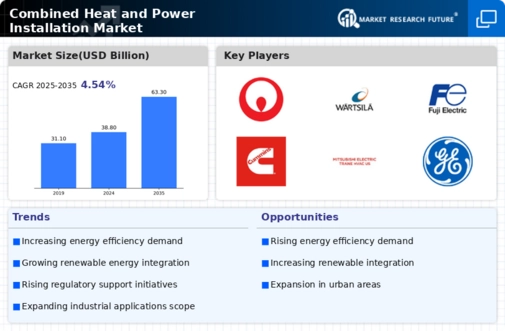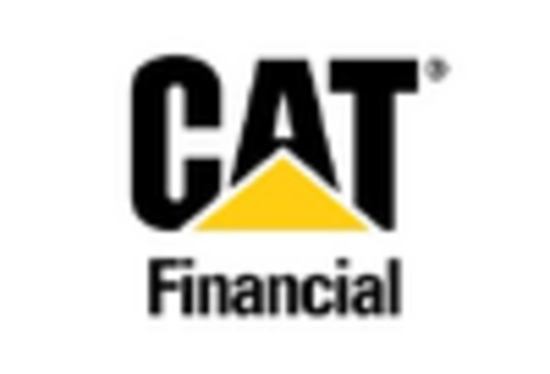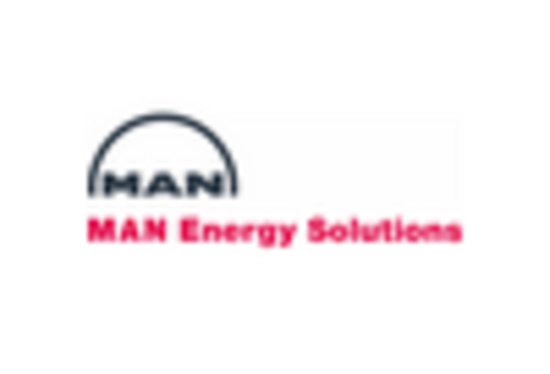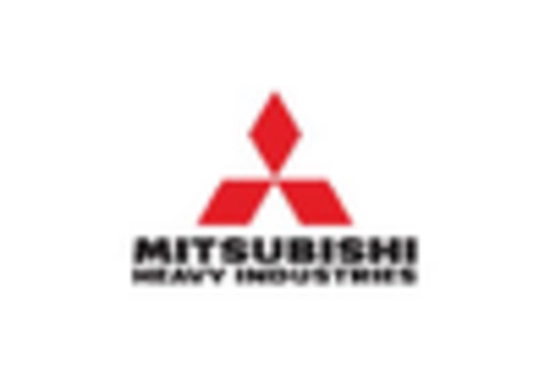Rising Energy Costs
The escalating costs of energy are propelling the Combined Heat and Power Installation Market forward. As traditional energy prices continue to rise, businesses and industries are increasingly seeking alternative solutions to mitigate expenses. CHP systems, which generate electricity and useful heat simultaneously, offer a cost-effective approach to energy management. According to recent data, the implementation of CHP systems can lead to energy savings of up to 30% compared to conventional energy sources. This financial incentive is likely to drive more organizations to invest in CHP installations, thereby expanding the market. Furthermore, the potential for long-term savings and reduced reliance on grid electricity makes CHP an attractive option for various sectors, including manufacturing and commercial buildings.
Government Incentives and Policies
Government incentives and supportive policies are playing a crucial role in the growth of the Combined Heat and Power Installation Market. Many governments are implementing regulations and financial incentives to promote energy efficiency and reduce greenhouse gas emissions. For instance, tax credits, grants, and rebates for CHP installations are becoming increasingly common. These initiatives not only encourage businesses to adopt CHP systems but also align with broader environmental goals. The market is witnessing a surge in installations due to favorable policy frameworks that facilitate investment in clean energy technologies. As governments continue to prioritize sustainability, the demand for CHP systems is expected to rise, further solidifying their position in the energy landscape.
Increased Focus on Energy Efficiency
The heightened emphasis on energy efficiency is significantly influencing the Combined Heat and Power Installation Market. Organizations are increasingly recognizing the importance of optimizing energy use to reduce operational costs and environmental impact. CHP systems, which provide both heat and power, are inherently more efficient than traditional energy generation methods. Data indicates that CHP can achieve efficiency levels of 80 to 90%, compared to 50% for conventional systems. This efficiency not only translates to lower energy bills but also contributes to reduced carbon emissions. As industries strive to meet sustainability targets and improve their energy profiles, the adoption of CHP technology is likely to accelerate, driving market growth.
Technological Advancements in CHP Systems
Technological advancements are reshaping the Combined Heat and Power Installation Market, making CHP systems more efficient and accessible. Innovations in turbine design, heat recovery technologies, and control systems are enhancing the performance of CHP installations. These advancements enable better integration with renewable energy sources, such as solar and wind, further increasing the appeal of CHP systems. Moreover, the development of smaller, modular CHP units is allowing a wider range of facilities, including small businesses and residential applications, to benefit from this technology. As these technologies continue to evolve, they are expected to lower installation costs and improve the overall viability of CHP systems, thereby expanding their market presence.
Growing Demand for Sustainable Energy Solutions
The increasing demand for sustainable energy solutions is a key driver of the Combined Heat and Power Installation Market. As environmental concerns gain prominence, businesses and consumers alike are seeking ways to reduce their carbon footprints. CHP systems, which utilize waste heat for energy generation, align well with these sustainability goals. The market is witnessing a shift towards cleaner energy sources, and CHP technology is often viewed as a bridge between traditional fossil fuels and renewable energy. This trend is likely to be reinforced by consumer preferences for environmentally friendly solutions, prompting more organizations to invest in CHP installations. Consequently, the market for CHP systems is expected to grow as sustainability becomes a central focus in energy planning.


















Leave a Comment